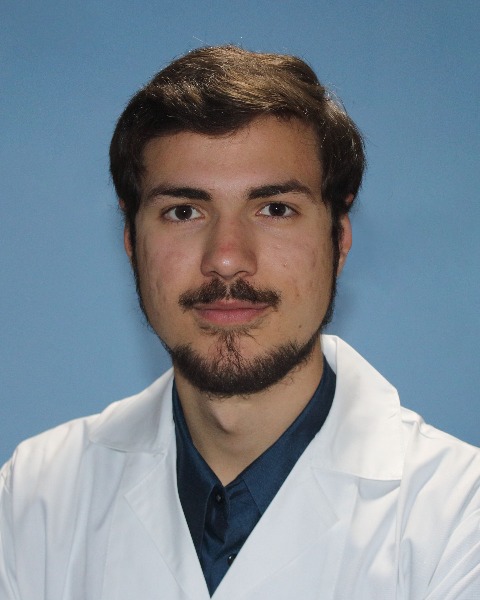SIR 2025
Embolization
Traditional Poster
8 - Coccidioimycosis as a Cause of Massive Hemoptysis: Outcomes from Transcatheter Embolization in an Endemic Population
- ZF
Zachary Fitzgerald, MD
IR Resident
University of Arizona, United States - ML
Michael Lee, MD
IR Resident
Univeristy of Arizona - College of Medicine - - T, United States 
Sarah Placek, DO (she/her/hers)
IR Resident
University of Arizona, United States
Arsenios K. Chriskos
Medical Student
Aristotle University of Thessaloniki, Greece- ID
Ilaria De Martini, MD
Assistant Professor
University of Arizona, United States - DG
Daniel Goldberg, MD
Assistant Professor
University of Arizona, United States - JH
Jack Hannallah, MD, MBA, MPH
Assistant Professor
University of Arizona - Banner University Medical, United States 
Shamar Young, MD
Professor
University of Arizona, United States- GW
Gregory J. Woodhead, MD, PhD
Assistant Professor
University of Arizona, College of Medicine, United States 
Lucas C. Struycken, MD (he/him/his)
Assistant Professor
University of Arizona, United States
Poster Presenter(s)
Author/Co-author(s)
Coccidioidomycosis (Valley Fever), which is endemic to the Southwest / Arizona, has been described in case reports as an uncommon cause of massive hemoptysis (MH). Outcomes from bronchial artery embolization (BAE) for treatment of hemoptysis secondary to coccidioidomycosis is understudied.
Materials and Methods:
Single-center retrospective study reviews instances of massive hemoptysis caused by pulmonary coccidioidomycosis infection. Demographic data and procedure outcomes are reviewed in these patients and compared with patients who underwent bronchial artery embolization (BAE) for other causes of massive hemoptysis.
Results:
10 patients with MH in the setting of pulmonary coccidioidomycosis underwent diagnostic angiography and BAE for definitive management from 2014 to 2024. Each of these patients had documented cavitary lesions attributable to the source of hemorrhage. 3 patients had pulmonary arterial pseudoaneurysm requiring venous access for definitive management, and these were not readily apparent on the preceding multidetector CTA. Technical success was defined as resolution of symptoms facilitating discharge from the hospital, and results were comparable across coccidioidomycosis (n=10) and aspergillosis/mycetoma groups (n=7).
Conclusion:
Cavitary pulmonary coccidioidomycosis appears to be affiliated with pulmonary arterial pseudoaneurysm formation more so than conventional pulmonary cavitary processes. Furthermore, multidetector CTA did not clearly identify these pseudoaneurysms. While further research is necessary, these findings suggest that patients with MH caused by coccidioidomycosis should have greater suspicion for pulmonary arterial sources of hemorrhage.


.jpg)